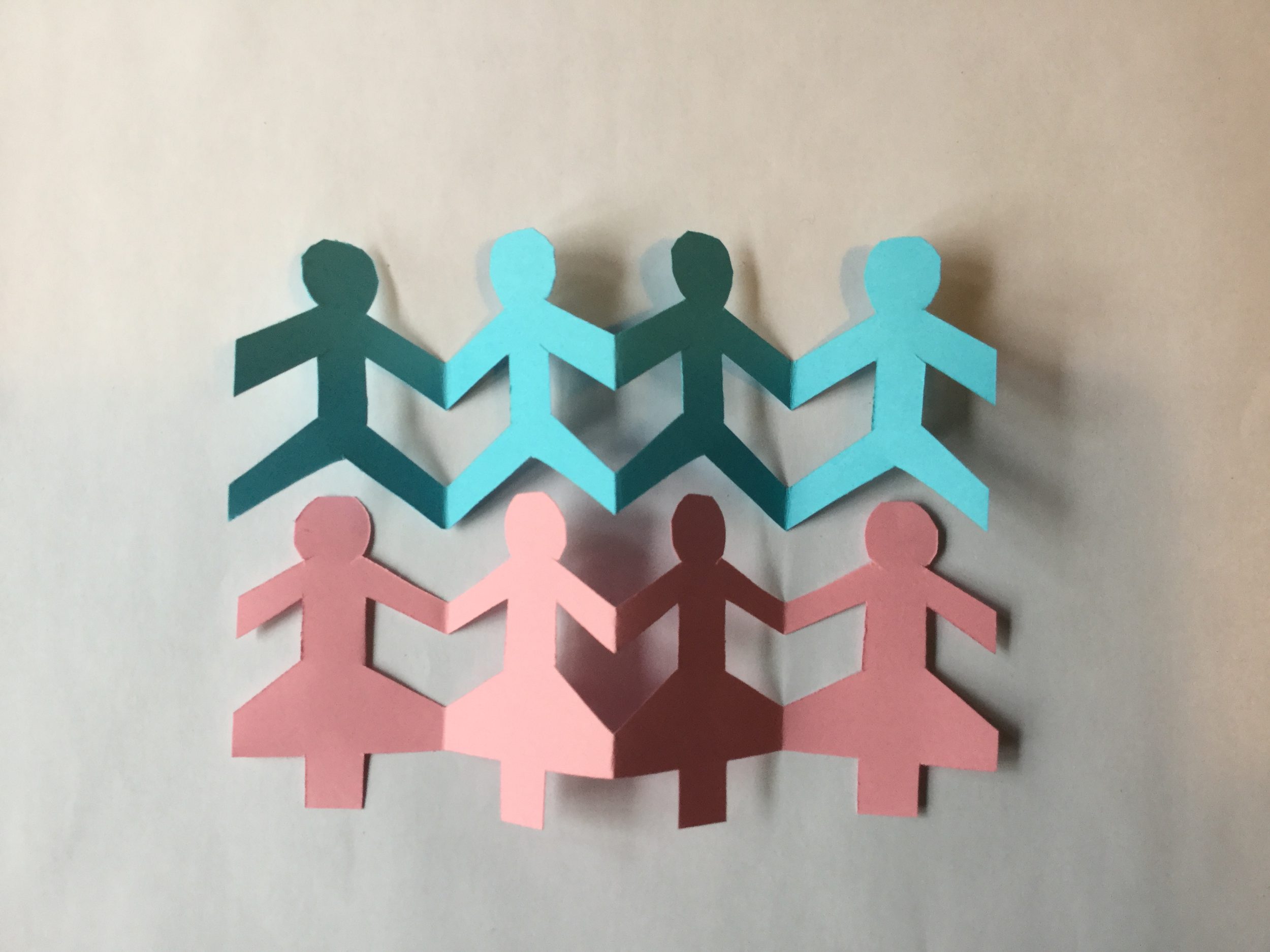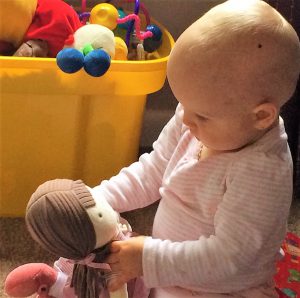
November 12, 2018, by Rupert Knight
“Line up: boy, girl, boy, girl”: Revisiting gender labels in the primary school
BOY GIRL BOY GIRL BOY GIRL BOY GIRL GIRL GIRL BOY GIRL
So, what is wrong with this pattern? The ninth term should be ‘BOY’, correct?
This is a familiar type of simple repeating pattern than children in their Reception year might engage with. However, there is a deeper issue. Why do we use this pattern in the first place? What if a child wishes not be categorised in this way? If we make this pattern in the classroom with children, how do we determine the characteristics of each group? Essentially, what is it that we believe defines whether a child is a boy or a girl and should we even be emphasising gender in this way? In this post Dr Catherine Gripton explores the everyday use of gender labels in the primary classroom.
Gender labelling
Creating a need for children to identify with a specific gender label provides them and their families with challenges. If we use these labels then we need to have agreed criteria to apply. Essentially, we must be clear about the defining difference between the children attributed with these two gender labels. The obvious differences to use are physical but this takes a highly anatomical approach where essentially our pattern above would be penis vagina, penis vagina, etc., which is probably not where we want to go in our mathematics activity. In addition, what of children who identify with a gender other than the one they were assigned at birth or do not identify with either of these labels?
On the 29th October 2018, a gender action award programme was launched in London. UK primary schools are being asked to register now to become a ‘Gender Action School’ and commit to challenging gender stereotyping in all aspects of school life. An important element in achieving this goal is to reduce our everyday emphasis upon gender labels in our classrooms. Evidence reported by the then government back in 2009 shows that we are best to avoid gender labels and generally lessen the accentuation of gender in the classroom. Emphasising gender in primary schools, particularly the binary labels of ‘girl’ and ‘boy’, provides subtle yet sustained clear messages to children about themselves, their families and society as a whole. We want to avoid transmitting the message to children that there are only two genders or that they have to know which of these they identify with from as young as three or four years old.

The everyday impact of gender emphasis
Emphasis of gender is evident every day in most primary school classes. Through the part they are assigned in the school play, expectations of their interests/behaviour and the use of a boy/girl seating plan or lining up strategy, gender stereotypes can be subtly reinforced to children. In teaching and assessment, binary gender labels are often used for efficiency or simply because it has always been so. School uniform, sports teams and toilets are distinguished separately for ‘boys’ and ‘girls’. School regulations around permitted hair length and school uniform are sometimes different for ‘boys’ and ‘girls’ and some schools have specific roles such as head boy/head girl or house captains based upon binary gender labels. These highlight gender (and gender differences) as an important binary characteristic and can be substantively unfair where there are significantly more boys or girls in a class or school group. These engendered rules and systems would seem quite strange if applied to adults. Imagine being asked to queue up at the supermarket checkout: woman, man, woman, man or insisting your book group has two coordinators, one man and one woman.
Practical issues and strategies
Some gendered practices are clearly driven by practical considerations. Many older primary children would rather not show their bodies to their classmates, regardless of gender. Whilst it would be great for older primary children to get changed for PE in individual cubicles, there is not the space for this in primary schools and instead their teachers designate a changing area for ‘boys’ and one for ‘girls’ and show sensitivity to individual children for whom public changing is a cause of anxiety. It is clearly impossible to eradicate gender altogether from the classroom and it in indeed an important part of their identity for many children. It is not, however, the only or most important part.
There are a range of ways to quieten the messages about gender, which many primary schools employ. Here are a few examples:
-
Line up in register, alphabetical or a random order.
-
Phrase rules so that they apply to all children. For example, ‘long hair must be tied back’ and ‘all skirts must be below the knee’ do not need to specify a gender.
-
Choose children randomly or on merit for questions, roles and jobs rather than alternating boy/girl or assuming boy/girl preferences.
-
Aim topics or book choices at specific children’s interests rather than ‘boy/girl’ friendly.
-
Have two school council members without determining their gender.
-
Avoid gendered language such as headmaster, dinner lady, and policeman and ensure language is used equally. For example, if using terms such as ‘mate’ or ‘sweetie’ then using them for all children and not according to gender.
-
Ensure sanctions and rewards or incentives are applied to all, avoiding a books for boys section in the library or banning boys from football for a day, etc.
-
Remove mother and father labels from school admission and other forms and instead use ‘parents’ or similar terminology.

Some schools have found themselves making a series of adjustments regarding gender where a child or family group have provided challenge to existing practices by not fitting into traditional gender stereotypes for ‘boys’ and girls’. Where a child identifies with a gender other than the one assigned at birth or appears not to conform to gender norms (gender variant), schools have been quick to adapt and avoid boy/girl binary gender thinking. Making adjustments around an individual child or family risks making them the centre of the changes, which can cause resentment from others and isolate them. The perception that special allowances are being made communicates the idea to all children that there is a norm which can shape their attitude towards themselves and others for the future. This is significant not least because 64% of trans pupils in secondary school report being subjected to transphobic bullying at school according to Stonewall’s 2017 report.
Where does this leave us?
Surely, it would be better to reduce emphasis on gender and reduce the use of gender labels in all schools. This approach provides all children (and families) with important learning for life and makes our schools more inclusive, reducing the need for gender-based adjustments for individuals. This helps all children to see difference as ordinary; that there are an almost infinite number of differences between one person and another and that gender (as internal sense of self) is just one of these. As Griffiths (2003, p.66) points out, ‘these are not differences from the norm: the existence of difference is normal. There is no norm.’ Whilst alternative messages about gender may be communicated to children outside of school, primary schools can lead the way and shape a more inclusive society for the future.
Griffiths, M. (2003). Action for social justice in education: fairly different. Buckingham: Open University Press.

Thanks for writing about this issue. One of my aims as a teacher/parent is to be gender neutral and so far as an NQT I am generally succeeding. I try to check myself when I hear myself about to say ‘girls!’ or ‘good boy’, for example, encourage all children to play with all toys (which I’ve sorted to avoid pink/blue) and try to deal with any gender stereotypes whenever they crop up.
As a trainee secondary Maths teacher, I’m concerned about the number of Maths questions I see that use boy/girl as a convenient binary. These appear to be very common even in GCSE papers, and I think that schools and exam boards ought to show more sensitivity about the message they are sending to non-binary or transgender students.